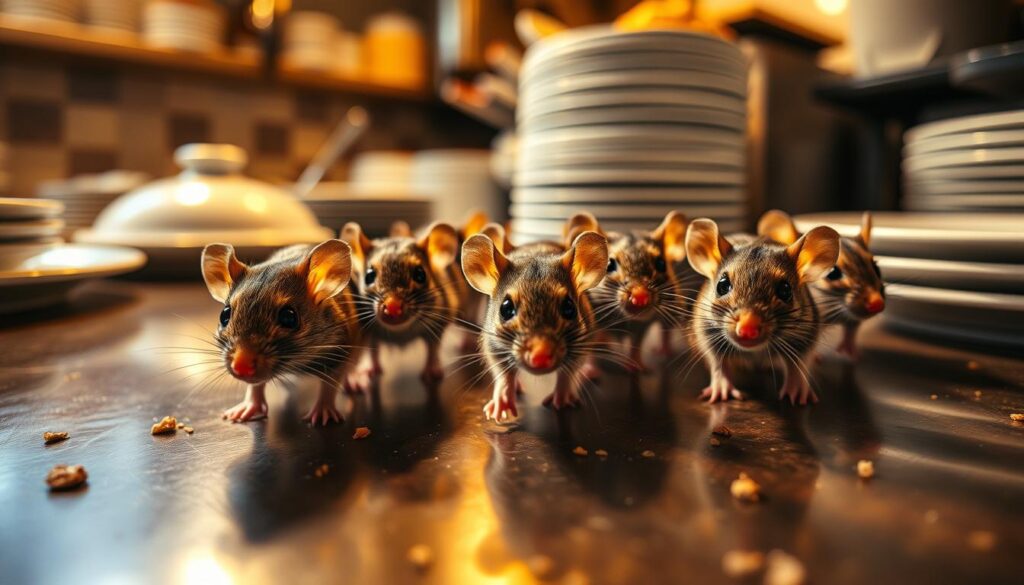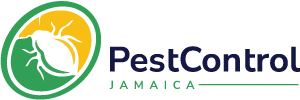Surprising fact: one sighting can cost a business customers overnight and harm its reputation for months.
In Jamaica’s warm, humid climate, that risk is year-round. Pests introduce physical and biological hazards that threaten food and can trigger health code violations. A single problem can spark bad reviews and erode trust quickly.
This guide offers a friendly, practical how-to for restaurants to prevent contamination and stay audit-ready. It explains why an integrated management system is a HACCP prerequisite and why routine actions and monitoring matter.
Expect clear steps on interior and exterior hot spots, early signs, storage and waste rules, when to call local officers, and how teams can keep guests safe. The focus is simple: protect food, avoid shutdowns, and keep your reputation strong.
Key Takeaways
- Routine monitoring and prevention are essential for food safety and reputation.
- An integrated approach aligned with HACCP keeps venues audit-ready.
- Focus on hot spots, storage, waste, and moisture to reduce pest pressure.
- Document actions, train staff, and encourage quick reporting of signs.
- Partnering with local officers speeds safe resolution when infestation appears.
Why Restaurant Pest Control Matters for Food Safety and Reputation
Protecting food and reputation begins the moment staff spot the first warning sign. Effective management is more than cleanup — it is a required prerequisite for HACCP plans in Jamaica and elsewhere.
Visible signs of infestation suggest unsanitary conditions and can trigger health inspections immediately.
Health code compliance and HACCP prerequisites
Minor evidence of pests often equals a violation. That leads to fines, mandated remediation, or temporary closure. Regular monitoring and clear records show due diligence to inspectors and auditors.
How a single sighting can damage online reviews and trust
One guest photo shared online can harm reputation for months. Pests spread pathogens that raise the risk of foodborne illness and costly corrective work. Linking prevention tasks to existing food safety routines keeps teams efficient and reduces risk.
- Train staff to report early signs.
- Document checks, actions, and follow-ups.
- Review plans seasonally and after menu changes.
Understanding the Present Risk Landscape in Jamaica
High heat and humidity in Jamaica create conditions where insects and rodents can breed without pause. That means teams must treat prevention as a daily task, not a seasonal fix.
Warm, wet weather speeds up life cycles. Eggs hatch faster and organic matter breaks down quickly, which raises odors and attracts attention to food storage and waste zones.
High-risk areas include floor drains, receiving bays, exterior lighting and waste pads. Cracked seals, worn sweeps, and gaps at doors let invaders slip inside within hours of arriving.
Shipments, wooden crates, and delivery pallets can carry hitchhikers. Inspect goods at receiving and isolate suspect batches until cleared.
“Shorter clean cycles and frequent trash pulls cut attraction and lower long-term risk.”
- Increase cleaning frequency and empty bins more often.
- Seal gaps, maintain door sweeps, and protect drains.
- Train staff to spot and log signs; track trends to target hot areas.
Warm, humid climates and year-round pressure
Ongoing training and trend tracking help prioritize resources where problems crop up most. Small, consistent actions preserve health and protect reputations for restaurants across the island.
Restaurant Pest Control Fundamentals
Prevention, monitoring, and quick action make up a practical framework teams can follow every day.
Integrated pest management (IPM) is a stepwise approach: prevent first, monitor often, and act when thresholds are reached.
Denying food, water, and shelter reduces pressure more than reactive treatments alone. Simple exclusion and good sanitation cut attraction fast.
The IPM approach: prevent, monitor, act
- Prevent: tighten storage, remove spills, fix leaks, and seal entry points.
- Monitor: schedule inspections, log findings, and track trends to guide responses.
- Act: use sanitation, exclusion, and mechanical methods first, then escalate to professionals when needed.
“Use the least-risk measures first and document every step to show due diligence.”
Records matter. Note what you found, what you did, and how you verified results. Set clear action thresholds by type so teams know when to escalate.
Align tasks with existing food safety programs and assign roles so staff own day-to-day checks. Review SOPs after incidents and update procedures to keep the system working in Jamaica’s year-round climate.
Spotting the Early Signs of a Pest Infestation
Early detection of small hints can stop a full infestation before it starts. Look daily for clear signs that give fast clues about where to act.
Watch for droppings, gnaw marks, grease trails, shredded packaging, webs, insect parts, or shed skins. Small crumbs and damaged boxes often show where pests find food.
Odd odors help too: ammonia notes suggest rodents, while musty smells often point to cockroaches. Listen in quiet moments for scurrying above ceilings or inside walls.
- Check packaging for holes, webbing, or larvae during receiving.
- Use a flashlight and mirror to inspect under equipment and near drains.
- Take photos, log exact locations and times, and escalate quickly.
- Calibrate response: one flying insect differs from multiple roaches.
| Sign | Likely Culprit | Quick Action |
|---|---|---|
| Droppings | Rodents | Isolate area, photograph, seal entry points, call for professional control |
| Grease trails / Odor | Cockroaches | Deep clean, remove food residues, increase monitoring |
| Damaged packaging / Larvae | Stored-product insects | Quarantine stock, inspect shipments, discard affected items |
Quick reporting protects food safety and staff health and keeps small issues from harming reputation. Early action makes control faster and less costly when a pest infestation appears.
Interior Hot Spots You Must Control Daily
Focus on the busiest indoor areas each shift to cut attraction and maintain food safety.
Dining areas
Wipe tables and seats promptly and clear crumbs after each party. Sweep beneath chairs and under booths to remove small bits that draw pests.
Inspect seat bases and table undersides regularly where debris hides and accumulates.
Food prep zones
Sanitize equipment surfaces, seams, and splash points after every use. Remove crumbs, drips, and trapped residues that feed insects and rodents.
Disassemble small equipment on schedule to clean trapped food from hard-to-reach edges.
Storage rooms
Keep dry goods in sealed containers and follow food storage rules: store items 6 inches off the floor and 12 inches from walls. This helps cleaning and inspections.
Enforce FIFO so older stock does not linger and attract stored-product problems.
Trash cans and floor drains
Use liners and tight lids, and wash bins often to remove residues and odors. Set frequent emptying schedules to avoid overflow.
Lift drain grates, remove solids, and sanitize drains with approved cleaners to deter flies and other nuisances.
Create a simple daily checklist that verifies these hot spots are checked and cleaned. Clear roles and short logs make it easy to show diligence and keep the kitchen and front-of-house safe.
Exterior Hot Spots That Drive Indoor Problems
Outdoor zones often set the stage for indoor issues when simple maintenance lapses occur. Focused, small fixes outside protect food safety and reduce follow-up service headaches.
Lighting placement that doesn’t attract insects
Relocate bright fixtures away from doors so light does not draw insects to entryways. Choose warmer bulbs and shielded fixtures to cut attraction while keeping guests and staff safe.
Dumpsters and waste pads with tight-fitting lids
Keep bins closed and never allow overflow. Position dumpsters downwind and away from entrances to limit transfer of odors and pests.
Clean and sanitize pads on a routine schedule and coordinate cleaning with collection times to avoid missed pickups.
Doors, windows, and air curtains to block entry
Seal gaps with sweeps and weatherstripping and repair frames promptly. Install air curtains at busy doors and receiving docks to deter flying insects and reduce indoor intrusion.
- Trim landscaping and remove leaf litter near entry areas.
- Inspect loading bays for cracks and standing water that invite problems.
Most Common Pests in Restaurants and Their Risks
Every kitchen has a shortlist of likely intruders; recognizing them early is half the fight. Below are the typical offenders, what they do, and quick signs staff should log.
Rodents
Health and operational threats: Rodents spread salmonella, listeria, and E. coli. They gnaw wiring and ruin packaging, risking fires and stock loss.
Look for droppings, grease marks, and chew patterns on boxes. These signs demand immediate sealing, trapping, and escalation.
Cockroaches
Cockroaches carry pathogens and survive long without food or water — some even live weeks after decapitation.
Shed skins, egg cases, and a musty odor point to active infestations. Persistent sanitation and tight exclusion are required.
Flies
Flies carry hundreds of diseases and can contaminate food quickly, especially near sugary spills and drains.
Clean spills at once and install screens or air curtains to reduce entries and cross-contamination.
Stored-product insects
These hitchhike in flour, grains, and nuts. Watch for webbing, larvae, and tiny pinholes in packaging.
Quarantine suspect lots, inspect incoming goods, and discard contaminated products to protect inventory and guests.
- Tip: Early identification dictates targeted tactics and safe escalation to professionals.
Restaurant Pest Control Prevention Pillars
A handful of core practices cut infestation risk and make daily routines easier to maintain. These pillars give teams clear actions to protect food, stock, and guests in Jamaica’s warm climate.
Deny access to food
Clean spills fast, wipe prep surfaces, and keep ingredients in sealed containers. Reinforce portioning and move cooked items to cold storage quickly to limit time that food sits at room temperature.
Deny entry and shelter
Seal cracks, install and maintain door sweeps, repair screens, and weatherstrip openings. Declutter storage, elevate boxes off the floor, and rotate stock to remove undisturbed harborage.
Destroy pests safely and effectively
Start with traps and mechanical methods, then escalate to approved products when needed. Follow product labels and safety steps to protect staff and guests.
- Schedule routine maintenance to keep barriers intact.
- Align cleaning and storage practices so prevention becomes second nature each shift.
- Combine traps and monitoring devices to verify outcomes and guide adjustments.
Daily and Weekly How-To Checklists for Jamaican Kitchens
A short, repeatable checklist makes busy shifts safer and audit-ready. Use simple routines so every team member knows what to check between parties and at shift end.
Front-of-house turnover steps after each party
Clear plates and wipe surfaces immediately. Sweep under and around tables to remove crumbs that attract pests.
Spot-mop spills and inspect seat bases and corners at end of service to catch sticky residues before they build up.
Back-of-house cleaning, sanitizing, and tool upkeep
Sanitize prep tables, slicers, and mixers after each use. Clean splash zones and high-touch areas before the next prep cycle.
Lift floor drain grates, remove debris, and apply approved products. Empty and wash trash cans daily; confirm liners and lids fit properly.
- Storage walk-through: sealed containers, pallets elevated, and FIFO dates current.
- Weekly deep clean: pull equipment, dismantle tools, and remove trapped food.
- Check monitoring devices, replenish baits and traps, and log placements and results.
- Train staff to flag and document signs and escalate per SOP thresholds.
| Task | Frequency | Who |
|---|---|---|
| Wipe tables & sweep under seating | After each party | Service staff |
| Sanitize equipment and splash zones | After each use / daily | Line cooks / supervisors |
| Lift drains, clean bins, check storage | Daily | Dish team / manager |
| Deep clean under/behind equipment; dismantle tools | Weekly | Maintenance / cook team |
Tip: Post a laminated checklist in prep and dish areas so nothing gets missed on busy shifts.
Proper Food Storage and Inventory Practices
A clear food storage routine keeps stock safe and reduces hidden threats before they start.
Keep dry goods in tightly sealed containers to block entry and stop odors that attract pests. Store containers at least 6 inches off the floor and 12 inches from walls so cleaning crews can access surfaces and inspect for signs quickly.
Receiving and FIFO habits that deter infestations
Train receiving staff to check pallets, liners, and cases for webbing, larvae, or pinholes before goods enter storage. Quarantine any suspect delivery and call a manager for review before moving stock.
- Use visible date labels and enforce FIFO so older food moves first.
- Do not mix old and new products in the same container to avoid cross-contamination.
- Schedule bin emptying and clean containers before refilling to remove residues.
| Standard | Why it matters | Action |
|---|---|---|
| Tight-seal containers | Blocks entry and odors | Use food-grade, latching lids |
| Elevation & spacing | Enables inspection & cleaning | Maintain 6″ and 12″ clearances |
| Receiving logs | Traceability and fast response | Record inspections and quarantines |
Tip: Keep storage areas well-lit, uncluttered, and monitor temperature and humidity where applicable to reduce conditions that favor infestations.
Waste, Drains, and Moisture Control Measures
Keep wet areas dry and bins tidy to stop small problems from becoming big headaches.
Regular routines make a big difference. Set trash emptying frequencies around peak service to avoid overflow and odors. Require tight-fitting lids and durable liners on all receptacles and wash bins often to remove films and residues.
Establish a floor drain protocol: lift grates, remove solids, scrub, and treat drains to deter drain flies. Inspect under sinks, ice machines, and beverage stations for hidden moisture and standing water. Squeegee and dry-mop after washdowns so puddles do not pool overnight.
Fix leaks and condensation immediately; use drip pans only as a temporary stopgap. Audit moisture-prone zones weekly and record maintenance actions so teams can track recurring problems.
“Tie moisture checks to trend logs — wet zones often align with recurring pest activity and repeat service calls.”
- Coordinate refuse collection to match your emptying schedule.
- Wash and sanitize outdoor pads and bins regularly to reduce attraction to food and pests.
- Link maintenance requests to logs so repairs are tracked and verified.
| Task | Frequency | Why it matters |
|---|---|---|
| Empty indoor bins | Aligned with peak service | Prevents overflow and odors |
| Sanitize bins & waste pads | Daily / weekly as needed | Removes residues that attract pests |
| Floor drain deep clean | Weekly | Deters drain flies and removes buildup |
| Leak inspection & repair | As found / weekly audit | Removes moisture sources that drive problems |
Quick tip: tie moisture control to your monitoring logs so trend data shows where targeted measures reduce pest calls and protect food safety.
When to Call a Professional Exterminator
When signs point to an active infestation, quick professional action protects food safety and operations.

Call a licensed technician as soon as clear evidence appears. Delays let small problems grow into costly infestations and can disrupt service. Early escalation limits spread and helps protect guests and staff.
Visible thresholds that require immediate help
- Mice: multiple live sightings in short windows, nests, gnawed packaging, or urine odors — call now.
- Cockroaches: live roaches, shed skins, or a distinct musty odor demand rapid escalation.
- Ants: repeated DIY failures, fire ant mounds, or carpenter ants that damage wood or structure need pros.
Avoid risky DIY traps and chemicals
Unapproved poisons and misused traps can contaminate food, create hazards for staff, and invalidate inspections. Do not spread baits near open food or in prep areas.
Tip: Choose licensed pest control providers who understand food service regulations.
Prepare a concise briefing for the technician: logs of sightings, exact locations, photos, times, and actions already taken. Assign a manager to oversee preparation, treatment-day safety, and post-treatment verification.
- Schedule follow-ups and add agreed measures into SOPs to prevent recurrence.
- Communicate re-entry times and handling precautions to all staff before resuming normal operations.
How to Build a Pest Control Plan That Supports HACCP
Start with a simple map of hazards and you’ll see where prevention and HACCP overlap.
Make the plan practical: describe hazards by area, attach clear preventive measures, and show how each risk links to a CCP or prerequisite program.
Hazards, preventive measures, and CCP links
Map risks by process step and area. Tie sealing, storage, and sanitation steps to CCPs where food safety is at stake.
Monitoring, corrective actions, and verification
Define who checks what, how often, and which tools to use. Set timeframes for corrective steps based on pest type and severity.
- Use digital checklists and photo logs for fast reporting.
- Require manager sign-offs and periodic audits to verify results.
- Include storage rules: sealed containers, elevation, and FIFO.
| Plan Part | What to Record | Owner | Frequency |
|---|---|---|---|
| Hazard map | Areas, species risk, CCP links | Quality manager | Quarterly |
| Monitoring | Checks, devices, photos | Shift lead | Daily |
| Corrective actions | Action taken, timeline, verification | Supervisor | As needed |
| Verification & records | Sign-offs, trend reviews, treatment reports | Manager / auditor | Monthly / after incidents |
Review at least quarterly and after any incident. Consider digital systems to automate reminders and consolidate data for faster, clearer reporting.
Pest Control Reporting That Speeds Resolution
Clear, consistent reporting turns a single sighting into actionable steps that stop small problems fast. A quick, verified report helps managers, vendors, and local officers respond with the right solution.
What to document: signs, locations, tools, and actions
Standardize entries so every report contains the essentials and can be acted on without delay.
- Record date, time, exact location, and the type of sign observed (droppings, webs, live sighting).
- Attach photos or safe samples and note nearby environmental conditions like moisture.
- List nearby products or tools used—traps, baits, cleaners—and their condition or EPA registration if chemicals were applied.
- Log immediate corrective steps: food discarded, areas cordoned off, or temporary fixes made.
- Capture the reporting employee’s name for follow-up and training, and require manager verification and sign-off.
Keep vendor reports and service sheets attached to create a complete history. Track infestations over time to spot patterns and prioritize improvements.
Tip: Review reports during daily huddles so the whole team sees hotspots, and make records available to auditors and inspectors as proof of active management and rapid response.
Partnering with a Pest Management Provider
Engage a local service pro who starts with a full-site review and crafts a plan to match Jamaica’s climate and your hours.
Providers begin with a comprehensive on-site inspection to map entry points, high-risk zones, and habits that invite intrusion. From there they tailor service schedules and recommendations to fit quick-service operations and busy shifts.
Perimeter treatments and routine food safety inspections
Perimeter treatments create a protective barrier that reduces indoor pressure and limits frequent interior responses. Expect inspectors to offer actionable food safety checks during each visit.
Employee training tailored to quick-service realities
Short, role-focused sessions work best. Training should teach quick detection, safe handling of products, and how to report sightings so managers can act fast without disrupting service.
- Select providers experienced with quick-service dynamics and local regulations.
- Require a thorough site inspection to tailor scope and schedules.
- Coordinate on approved pest control products and safe application methods for kitchen areas.
- Define urgent response protocols and regular verification steps.
- Review reports jointly to tune product placement and service frequency.
| Provider Deliverable | What to Expect | Benefit |
|---|---|---|
| Initial site inspection | Full walk-through, photos, hazard map | Custom program built for your layout and operations |
| Perimeter treatments | Targeted exterior barrier applications | Fewer interior sightings and lower infestation pressure |
| Routine food safety inspections | Actionable notes, recommended fixes, verbal brief | Continuous alignment with food safety goals |
| Staff training | Short, role-based sessions and quick-reference tips | Faster reporting and consistent daily practice |
Review contract terms to align service windows with peak hours, seasonal pressures, and quarterly performance reviews. Track outcomes by fewer sightings and faster resolution times to measure success.
Creating a Culture of Food Safety and Staff Accountability
“A culture that treats food safety as everyone’s job makes small signs visible and quickly acted on.”

Set the standard: require zero tolerance for pests and make clear that protecting guests and brand reputation matters each shift.
Train staff during onboarding and schedule short refreshers. Use practical, task-based lessons so people know what to look for and how to respond. Pair training with visible tools like posted checklists and digital reminders to keep routines on track during busy service.
- Recognize team members who report signs early to reinforce accountability.
- Hold brief daily huddles to review hotspots and priorities.
- Encourage cross-functional ownership — FOH, BOH, and management share duties and notes.
Empower staff to stop service in an affected area until safe steps are taken. Make auditing routine, use results to coach, and simplify workflows that prevent problems.
Good management links metrics to food outcomes, not only speed or sales, and celebrates inspection wins to build pride and momentum.
Conclusion
A consistent prevention program keeps kitchens compliant and guests confident. An integrated, IPM-based approach to restaurant pest control safeguards food handling, daily operations, and brand trust without heavy disruption.
In Jamaica’s climate, year-round vigilance pays off. Consistent checklists, sealed storage, and strict waste schedules cut incidents and smooth service.
Early detection and clear reporting speed solutions and support HACCP obligations. Partner with a capable pest control provider for perimeter defense and staff training to strengthen monitoring and corrective actions.
Build a culture where every team member acts. Sustained routines protect reputation, lower costs, and keep guests happy. Review your current plan today and close any high-risk gaps with confidence.

